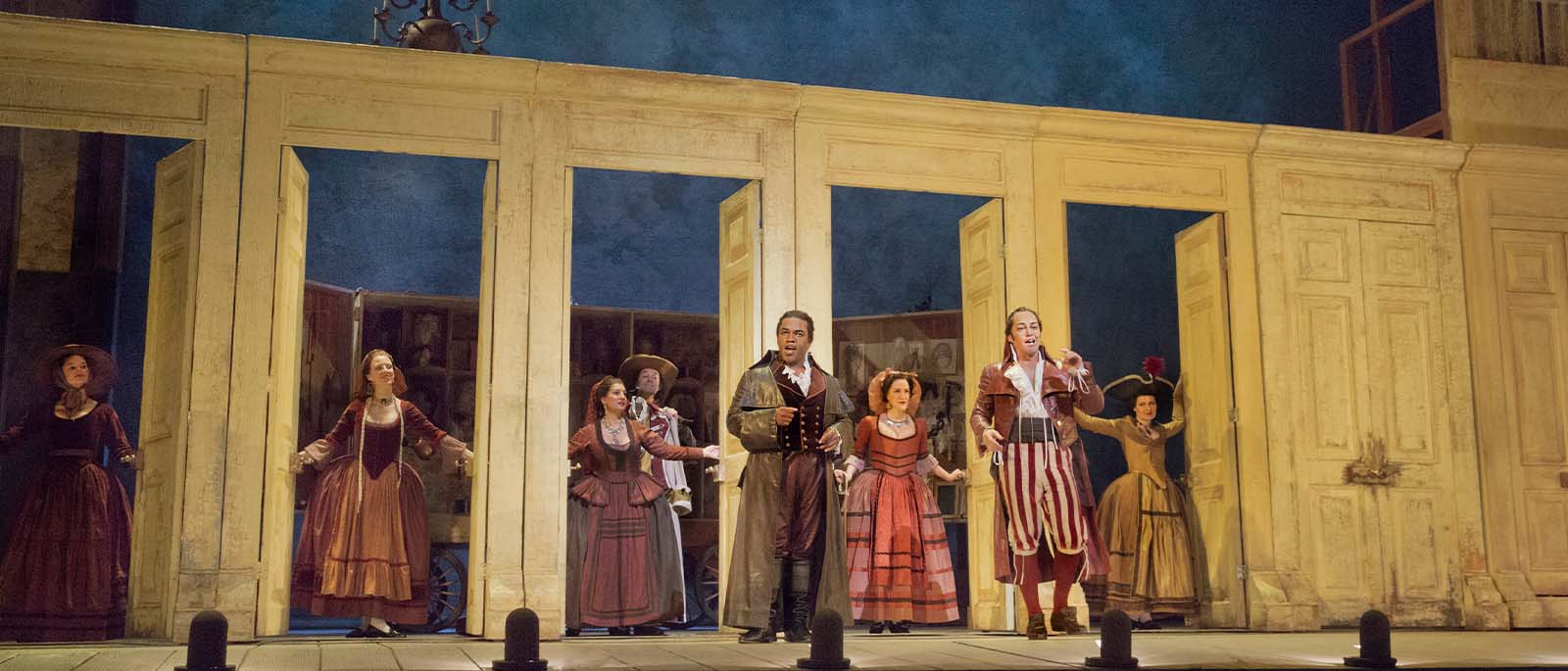
Gioachino Rossini
Il Barbiere di Siviglia
Upcoming Performances
Overview
Rossini’s effervescent comedy retakes the stage in Bartlett Sher’s madcap production. Two star mezzo-sopranos—Isabel Leonard and Aigul Akhmetshina—headline a winning ensemble as the feisty heroine, Rosina, alongside high-flying tenors Lawrence Brownlee and Jack Swanson, in his Met debut, as her secret beloved, Count Almaviva. Baritones Davide Luciano and Andrey Zhilikhovsky star as Figaro, the inimitable barber of Seville, with baritone Nicola Alaimo and bass-baritone Peter Kálmán as Dr. Bartolo and bass Alexander Vinogradov as Don Basilio rounding out the principal cast. Giacomo Sagripanti conducts.
Prior to the April 19 performance, children and families are welcome to join our Spring Open House. The Open House is free to all ticketholders for the April 19 performance.
Please note that video cameras will be in operation during the May 27 and May 31 performances as part of the Met’s Live in HD series of cinema transmissions.
Production a gift of The Sybil B. Harrington Endowment Fund
Revival a gift of The Joseph and Robert Cornell Memorial Foundation
Languages
Languages sung in Il Barbiere di Siviglia
Sung In
Italian
Titles
Title languages displayed for Il Barbiere di Siviglia
Met Titles In
- English
- German
- Spanish
- Italian
Timeline
Timeline for the show, Il Barbiere di Siviglia
Estimated Run Time
3 hrs 10 mins
-
House Opens
-
Act I
95 mins
-
Intermission
30 mins
-
Act II
65 mins
-
Opera Ends
Cast
Select a date from the dropdown to filter cast by date of performance
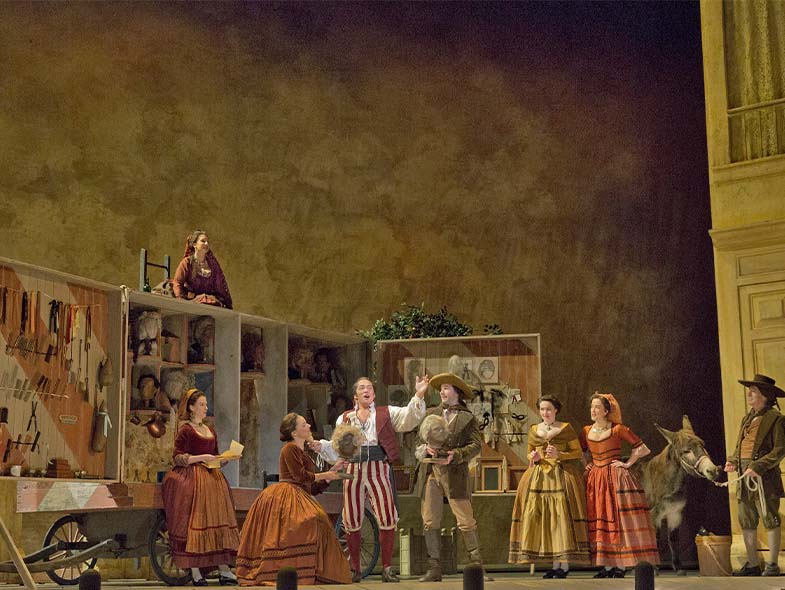
World premiere: Teatro Argentina, Rome, 1816. Rossini’s perfectly honed treasure survived a famously disastrous opening night (caused by factions and local politics more than any reaction to the work itself) to become what may be the world’s most popular comic opera. Its buoyant good humor and elegant melodies have delighted the diverse tastes of every generation for two centuries, and several of the opera’s most recognizable tunes have entered the world’s musical unconscious, most notably the introductory patter song of the swaggering Figaro, the titular barber of Seville.
Creators
Gioachino Rossini (1792–1868) was the world’s foremost opera composer in his day. Over the course of just two decades, he created more than 30 works, both comic and tragic, before retiring from opera composition at the age of 37. Cesare Sterbini (1784–1831) was an official of the Vatican treasury and a poet whose literary fame rests squarely on Barbiere. Pierre Augustin Caron de Beaumarchais (1732–99) was the author of the three subversive Figaro plays, of which Le Barbier de Séville (1775) was the first.
PRODUCTION
Bartlett Sher
SET DESIGNER
Michael Yeargan
COSTUME DESIGNER
Catherine Zuber
LIGHTING DESIGNER
Christopher Akerlind
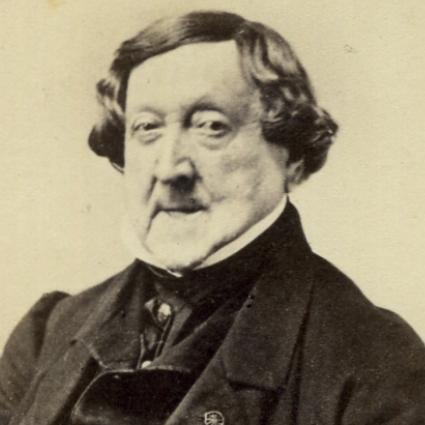
Composer
Gioachino Rossini
Setting
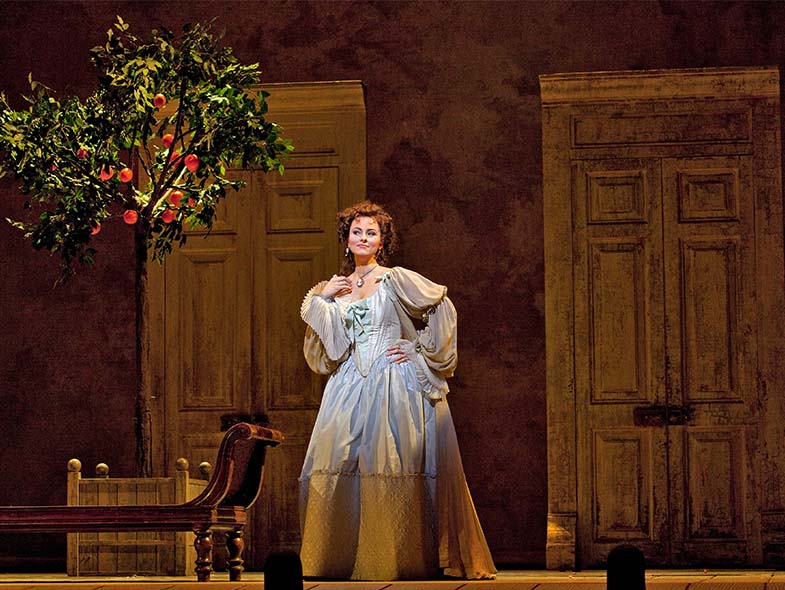
Seville is both a beautiful city and something of a mythical Neverland for dramatists and opera composers. The Don Juan legend has its origins in Seville, and some of the steamiest operas (such as Bizet’s Carmen) make their home in this most beguiling of cities. Beaumarchais’s play was revolutionary in its day: Premiered in the lead up to the French Revolution, it offered a satirical look at the power dynamics between men and women, masters and servants, and those with resources and those with resourcefulness.
Videos
Music
The paradox of Rossini’s music is that the comedy can soar only with disciplined mastery of vocal technique. The singers must be capable of long vocal lines of attention-holding beauty as well as the rapid runs of coloratura singing. The score features solos of astounding speed in comic, tongue-twisting patter forms, especially the title role’s well-known Act I showstopper, “Largo al factotum.” Beyond the brilliant solos, the singers must blend well with one another in the complex ensembles that occur throughout the opera.
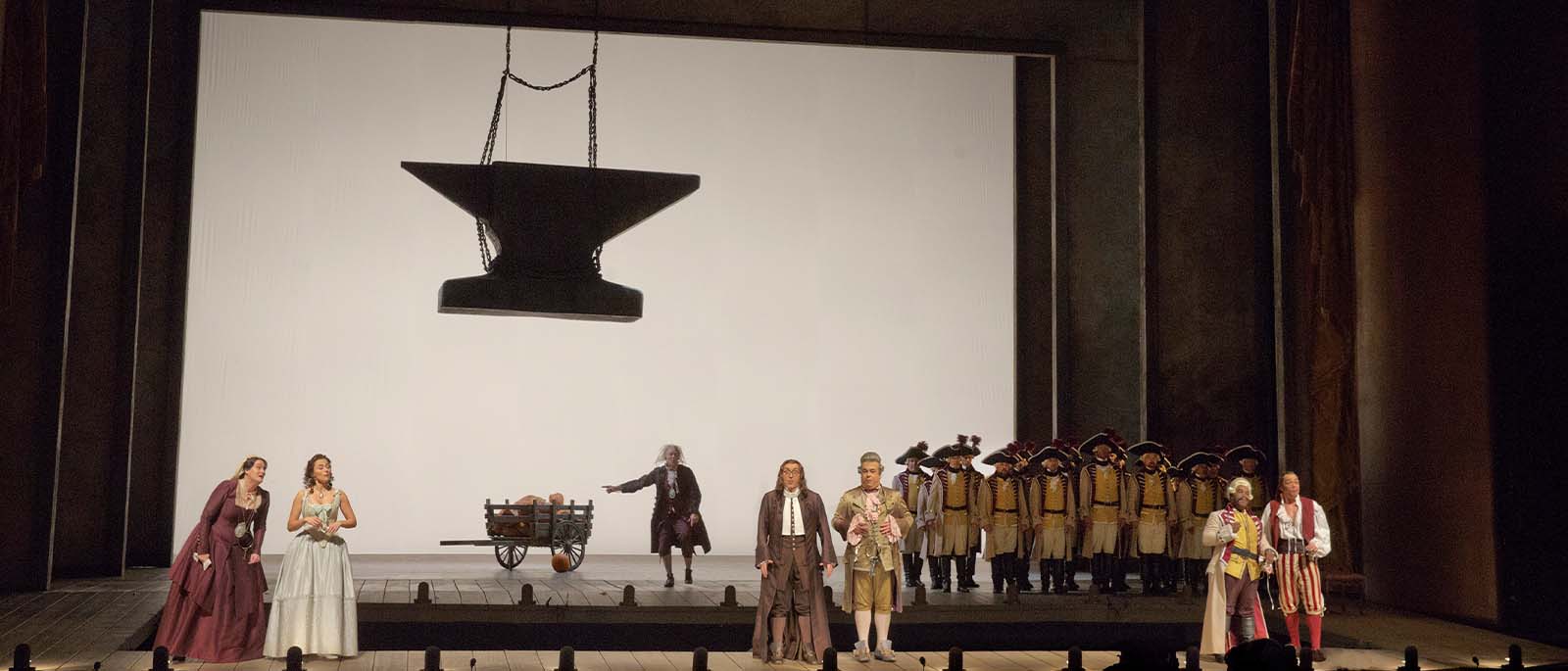



















Share This Page
Social Share
Copied